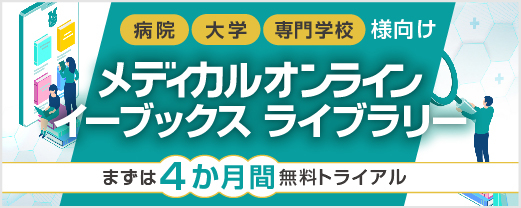アブストラクト
Japanese
| Title | コホート内から抽出した地域在住高齢者の身体活動量と軽度認知障害との関連 |
|---|---|
| Subtitle | 原著 |
| Authors | 小田川敦*, 桂敏樹2*, 星野明子3*, 志澤美保2*,3*, 臼井香苗3* |
| Authors (kana) | |
| Organization | *宇治市役所, 2*京都大学大学院医学研究科人間健康科学系専攻, 3*京都府立医科大学大学院保健看護学研究科 |
| Journal | 日本農村医学会雑誌 |
| Volume | 68 |
| Number | 6 |
| Page | 781-789 |
| Year/Month | 2020 / 3 |
| Article | 原著 |
| Publisher | 日本農村医学会 |
| Abstract | 我が国では認知症の増加が重要な健康課題になっている. 厚生労働省は認知症を予防する最も効果的な方法はMCI (Mild Cognitive Impairment)を把握し対処することであると指摘している. そこで, 本研究では認知症のリスク要因である不活発な身体活動量とMCIの関連を検討することを目的とした. 基本チェックリストによって判定したA市在住閉じこもり高齢者26名と性, 年齢, 居住地区をマッチさせた非閉じこもり26名を2013年コホートから無作為に抽出し, 身体活動量, MCIなどを訪問調査した. その内容は基本属性, 基本チェックリスト, IPAQ, MoCA-J, Kohs, HDS-R, GDS-S-J, IADLである. 抽出された高齢者の身体活動量(IPAQ)から区分した身体活動の活動群と不活動群の2群間でMCIを比較するためにχ2検定, Mann-Whitney U検定を用いた. 統計解析にはSPSSを用い, 危険率は5%未満とした. 身体活動不活動群は活発群に比べて殆ど身体活動がなく非活動時間が多く, 健康づくりに必要な身体活動量を満たしていなかった. 更に不活動群は活動群に比べてMoCA-JによるMCIが多かったが, KohsによるMCIは相違がなかった. このことから, 健康づくりやMCI予防に必要な身体活動レベルを満たしていない不活動状態がMCIのリスク要因になることが明らかになった. 本研究は地域在住高齢者から不活動者を把握し, MCIのリスクを早期に発見し対処する方法を考案する必要性を示唆している. |
| Practice | 臨床医学:一般 |
| Keywords |
English
| Title | Relationship Between Physical Activity and Mild Cognitive Impairment in Community-Dwelling Elderly Adults Sampled Randomly From a Cohort |
|---|---|
| Subtitle | |
| Authors | Atsushi ODAGAWA*, Toshiki KATSURA2*, Akiko HOSHINA3*, Miho SHIZAWA2*,3*, Kanae USUI3* |
| Authors (kana) | |
| Organization | *Dept of Uji City Hall, 2*Dept. of Human Health Sciences, Graduate School of Medicine Kyoto University, 3*Graduate School of Health Sciences and Nursing, Kyoto Prefectural University of Medicine |
| Journal | Nihon Noson Igakkai Zassi |
| Volume | 68 |
| Number | 6 |
| Page | 781-789 |
| Year/Month | 2020 / 3 |
| Article | Original article |
| Publisher | The Japanese Association of Rural Medicine |
| Abstract | The increase in dementia is becoming a serious health-related issue in Japan. The Ministry of Health, Labour and Welfare has indicated that the most effective method for preventing dementia is to detect and manage mild cognitive impairment (MCI). Accordingly, this study focused on "low physical activity", which is a risk factor for dementia, and aimed to clarify the correlation between physical activity and MCI by analyzing the amount of physical activity among community-dwelling elderly adults sampled randomly from a cohort. A door-to-door survey was conducted of 26 physically housebound elderly adults and 26 physically non-housebound elderly adults matched for sex, age, and living quarters who were randomly sampled from a 2013 cohort. Housebound status was assessed using a basic checklist. The survey was conducted at the participants' homes. Components of the survey included basic attributes, basic checklists, the International Physical Activity Questionnaire, Japanese version of the Montreal Cognitive Assessment (MoCA-J), Kohs Block Design Test (Kohs), Revised Hasegawa's Dementia Scale, Geriatric Depression Scale - Short Version-Japanese, Instrumental Activities of Daily Living Scale, and grip strength. The chi-squared or Mann - Whitney U test was used for comparisons between the elderly adults with low physical activity and those with high physical activity. The chi-squared test was used to compare the relationships between physical activity and MCI assessments (MoCA-J, Kohs). Statistical analysis was performed using SPSS for Windows, with significance established at p < 0.05. Physically inactive elderly adults were engaged in significantly physical activities and had significantly more inactive periods compared with physically active elderly adults. The inactive elderly adults did not fulfill the level of physical activity needed to maintain fitness. In addition, a significantly higher percentage of inactive elderly adults had MCI compared with active elderly adults according to MoCA-J score. When MCI was assessed using the Kohs, on the other hand, there was no significant difference between the active and inactive elderly adults. Inactive elderly adults were not able to fulfill the level of physical activity necessary to maintain fitness and prevent MCI. There is a need to urgently consider ways to identify inactive community-dwelling elderly adults and to detect and manage MCI at an early stage. |
| Practice | Clinical medicine |
| Keywords |
- 全文ダウンロード: 従量制、基本料金制の方共に770円(税込) です。
参考文献
- 1) 竹内孝仁. 寝たきり老人の成因 ; 「閉じこもり症候群」について. 老人保健の基本と展開, 東京 : 医学書院, 1984 ; 148-152.
- 2) 平井 寛. 高齢者の「閉じこもり」に関する文献学的研究. 研究動向と定義, コホート研究の検討. 日公衛誌 2007 ; 54 : 293-300.
- 3) 安村誠司. 「閉じこもり」高齢者のスクリーニング尺度の作成と介入プログラムの開発. 厚生労働科学研究費補助金(長寿科学総合研究事業)平成12年度〜平成14年度総合研究報告書 2003 ; 131-137.
- 4) 忍野洋子. 地域高齢者の閉じこもりの状況とその背景要因の分析. 日地域看護会誌 3 ; 2001 ; (1) : 26-31.
- 5) 横山博子. 外出頻度の低い「閉じこもり」高齢者の特徴に関する研究 ; 自立度の差に着目して. 老年社会科学 2005 ; 26(4) : 427-437.
残りの22件を表示する
- 6) 藤田幸司. 地域在宅高齢者の外出頻度別にみた身体, 心理, 社会的特徴. 日公衛誌 2004 ; 51(3) : 168-179.
- 7) 藺牟田洋美. 地域高齢者における「閉じこもり」の有病率ならびに身体, 心理, 社会的特徴と移動能力の変化 日公衛誌 1998 ; 45(9) : 883-891.
- 8) 恒吉玲代. 地域在住高齢者における「閉じこもり」と体力および日常の身体活動量. 体力科学 2006 ; 55(6) : 741.
- 9) D Laurin, R Veneawlt, J Lindsay, et al. Physi-cal Activity and Risk of Cognitive Impairment and Dementia in Elderly Persons. Arch Neurol, 2001 ; 58(3) : 498-504.
- 10) 宇治市高齢者保健福祉計画第5期介護保険事業計画 ; http://www.city.uji.kyoto.jp/cmsfiles/contents/0000009/9585/keikaku.pdf
- 11) CL Craig, AL Marshall, M Sjostorm, et al. In-ternational physical activity questionnaire : 12-country reliability and validity. Med Sci Sports Exerc. 2003 ; 35 : 1381-1395.
- 12) 村瀬訓生, 勝村俊仁, 上田千穂子. 身体活動量の国際標準化-IPAQ日本語版の信頼性, 妥当性の評価-. 厚生の指標 2002 ; 49 : 1-9.
- 13) K Tomioka, J Inamoto, K Saeki, et al. Reliabili-ty and Validity of the International Physical Activity Questionnaire (IPAQ) in Elderly Adults : The Fujiwara-kyo Study. Journal of Ep-idemiology 2011 ; 21 (6) : 459-465.
- 14) 厚生労働省 : 健康づくりのための身体活動基準, 2013 ; http://www.mhlw.go.jp/stf/houdou/2r9852000002xpleatt/2r9852000002xppb.pdf
- 15) ZS Nosreddine, NA Philips, V Bedirian, et al. The Montreal Cognitive Assessment, MoCA ; A brief screening tool for mild cognitive impair-ment. J Am Geriatr Soc. 2005 ; 53 (4) : 695-699.
- 16) 鈴木宏幸, 藤原佳典. Montreal Cognitive As-sessment(MoCA)の日本語版作成とその有効性について. 老年精医誌 2010 ; 21(2) : 198-202.
- 17) SC Kohs. The Block-Design Tests. J. Ex. Psy-cho 1920 ; 13 : 357-376.
- 18) 山上徹也, 田井中みはる, 松田祐一. Kohs立方体組み合わせテストはmild cognitive impair-mentのスクリーニングに使えるか MMS, かなひろいテストとの比較検討. 老年精医誌 2001 ; 12(6) : 671-678.
- 19) 加藤伸司. 改訂長谷川式簡易知能評価スケール(HDS-R)の作成. 老年精医誌 1991 ; 2 : 1339-1347.
- 20) 杉下守弘, 朝田 隆. 高齢者用うつ尺度短縮版-日本版(Geriatric Depression Scale-Short Ver-sion-Japanese, GDS-S-J)の作成について. 認知神科学 2009 ; 11(1) : 87-90.
- 21) MP Lawton, EM Brody. Assessment of older people : Self Maintaining and instrumental ac-tivities of daily living. Geroulologist 1969 ; 9 : 168-179.
- 22) 国立健康, 栄養研究所 : 改訂版 身体活動のメッツ(METs)表 ; http://www.nih.go.jp/eiken/programs/2011mets.pdf
- 23) DE Barnes, RA Whitmer, K Yaffe. Physical ac-tivity and dementia : The need for prevention trials. Exerc Sport Sci Rev. 2007 ; 35 (1) : 24-29.
- 24) 厚生労働省 : 介護予防支援マニュアル(改訂版 : 平成24年3月) ; http://www.mhlw.go.jp/topics/2009/05/dl/tp0501-1_08.pdf
- 25) 藤田幸司, 山崎幸子, 藺牟田洋美, 他. 交流サロン活動を通じた高齢者の閉じこもり改善のための心理的支援プログラムの検討. 老年社会科学 2014 ; 36(2) : 238.
- 26) 新開省二, 藤田幸司, 藤原佳典, 他. 地域高齢者における"タイプ別"閉じこもりの予後 ; 2年間の追跡研究. 日公衛誌 2005 ; 52(7) : 627-638.
- 27) 厚生労働省 : 認知症施策推進総合戦略(新オレンジプラン)-認知症高齢者等にやさしい地域づくりに向けて-, 2015.



